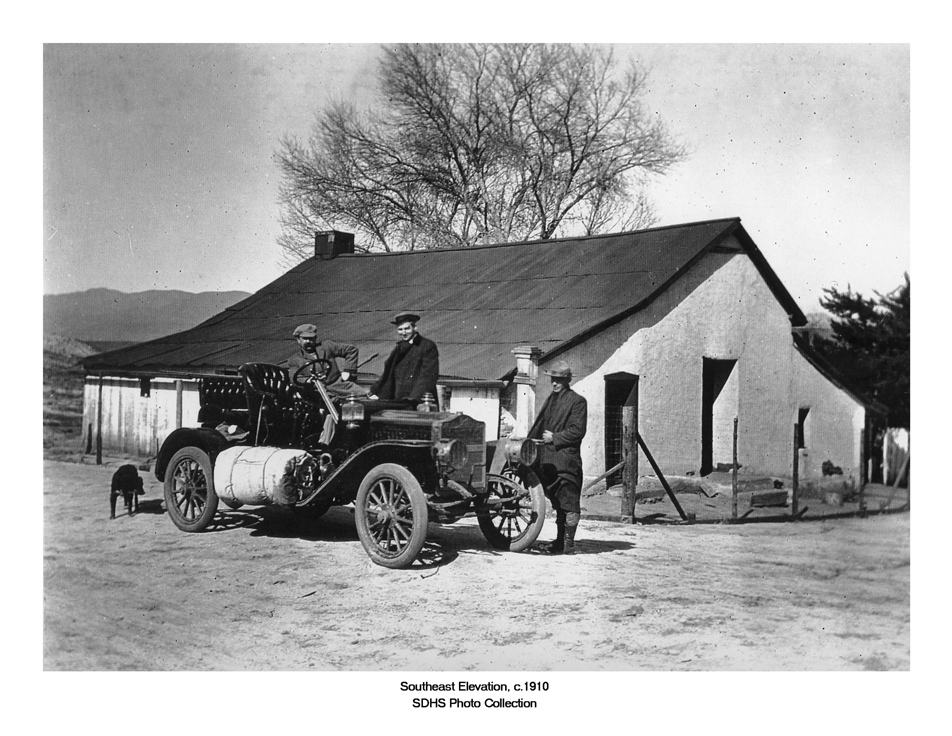Warner Carrillo Adobe Ranch House and Barn, 1857
Location:
Warner Springs, CAAccolades:
- 2013 AIA San Diego Award: Warner-Carrillo Adobe Ranch House Restoration
- 2013 AIA San Diego – Divine Detail Award: Wooden Structural Crutches at Warner-Carrillo Ranch
- 2013 California Preservation Foundation Award: Warner-Carrillo Adobe Ranch House Restoration
- 2013 American Public Works Assoc. Historical Restoration Project of the Year: Warner-Carrillo Adobe Ranch House Restoration
- 2012 Governor’s Historic Preservation Award: Warner-Carrillo Adobe Ranch House Restoration
- 2009 California Preservation Foundation Award: Warner-Carrillo Ranch Adobe Barn
This challenging project restores an important Historic Landmark to its condition during the period of its historic significance in the mid to late 1800s. The Warner Carrillo Ranch House (WCRH) was designated as a National Historic Landmark in 1961 and became a State Registered Landmark in 1964. The history of the building highlights many important themes of America’s westward expansion. Its restoration recovers a priceless state and national landmark, and its curation as a house museum provides valuable public education and enjoyment. The Restoration Project overcame significant regulatory, technical, and environmental challenges.
History
Built in 1857 on the historic Warner’s Ranch by Vicenta Carrillo, the adobe served as a “Butterfield Stage Stop” from 1858 until the start of the Civil War in 1861. This was California’s first regular overland transcontinental stage connection with St. Louis. The adobe was built directly beside the Emigrant Trail and with its location, in the first well-watered valley to be encountered after crossing the Great Southwestern Deserts, it figured prominently in the settlers’ diaries as their first glimpse of the promised land. The Ranch is strongly associated with important historical themes, including Mexican and American culture contact during the Mexican Republic; the frontier period in American westward migration, trade, and settlement; and the Gold Rush.
Secretary of the Interiors Standards
The restoration of the Ranch House thoughtfully reconciled the rigorous Secretary of the Interior’s Standards for the Treatment of Historic Properties – Restoration with the State of California’s Historic building code and Americans with Disabilities Act (ADA) requirements. After decades of neglect, the effort required rebuilding missing adobe and wood framed walls, as well as, roof features. This was all accomplished while saving as much original material as possible, such as the wooden ceiling beams, original interior paint surfaces, doors and walls, and retaining historic fabric being a crucial element to a restoration of a national landmark. While long lost features were re-exposed, such as the original cobble stone floor paving; new features such as a fire suppression system and seismic stabilization were intricately laced into the resource and hidden, when feasible, from view. New and original materials are differentiated when feasible. For example the kitchen corner pie safe finishes are purposely differentiated to interpret the painted reconstructed portions from the aged original patina potions of the cupboard. Rebuilt adobe walls have newly minted pennies inserted in the mortar between adobe blocks in order to assist future investigations in delineating the current restoration work from the original historic fabric.
Barn Preservation
The treatment approach for the timber peg and mortar barn was preservation. Due to its poor condition, the barn underwent a structural stabilization. Beams were sistered or replaced, and every structural post was sistered with new framing. Instead of rebuilding damaged joints, wood “crutches” were installed around existing mortise and tenon beams and posts. This approach allowed the historic member to remain in place and be appreciated for historic significance, while redistributing all of the structural weight to the new date stamped framing.
Historic Structures Report with Archaeology
The project was developed under the Cultural Stewardship Funding Program. This was the first comprehensive historic structures report on the property. The goal of the investigation was to research, identify and record the physical history, evolution and condition of the building from its initial construction to the present time and identify historic property treatments for the structure, materials and finishes. Archaeological units around the perimeter and one inside the building uncovered the original rammed earthen porch, a trash deposit (1860s), two habitations of rammed earthen floors and foundation construction sequences. Based on the results of the Historic Structures Report, the treatment plan identified areas requiring immediate stabilization measures, as well as provided recommendations for the restoration of the structure.





























